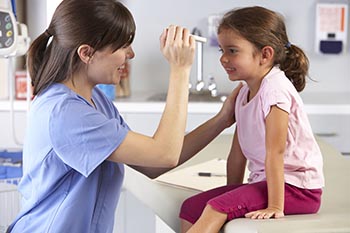Children are at increased risk for eye injuries in the summer, according to University of Alabama at Birmingham (UAB) researchers. Eye injuries are much more common in May and June before reaching a peak in July, then falling off as school begins in the fall, says Gerald McGwin, Jr. Ph.D., a professor in the Departments of Epidemiology and Ophthalmology at UAB.

“Overall, the leading cause of eye injury in children 15 and younger is sports, specifically swimming,” said McGwin.
He notes that pool chemicals, which can cause eye irritation, play a prominent role in these injuries, as does being hit by water toys or flying elbows and feet.
“Ensuring that a pool’s pH level is within normal range is one way to reduce these injuries,” he said. “Goggles and swim masks are another way by providing a barrier between eyes and water.”
An often underappreciated cause of eye injuries throughout the year is household cleaners and chemicals, particularly for younger children. McGwin said that for children under two, household chemicals make up more than 30 percent of injuries.
“The most startling observation is how many young children under two years of age suffer eye injuries from household chemicals,” said McGwin. “The obvious solution for parents and caregivers is to keep dangerous chemicals and substances locked up or out of the reach of children at all times.”
McGwin also stresses that eye protection for children of any age while playing sports is important. Basketball, swimming and pool activities top the list of injury inducers in sports, with baseball, softball and guns (air, gas, spring and BB) following close behind.
Sparklers and firecrackers head the list of fireworks-induced injury, with sparklers causing nearly half of all injuries in children less than five years of age. Sparklers can reach 1,800 degrees Fahrenheit. McGwin recommends leaving fireworks to professionals.
“The American Academy of Pediatrics strongly recommends that families should be counseled to attend public displays of fireworks and refrain from using fireworks at home,” McGwin said.
If there is one piece of good news regarding children’s eye safety, it is that the number of eye injuries among children 15 and younger is going down. From a high of more than 80,000 in 1992, the number has consistently dropped to a low of slightly more than 50,000 in 2010.
“The majority of eye injuries are treatable,” McGwin said. “But the best treatment is to prevent eye injuries in the first place.”